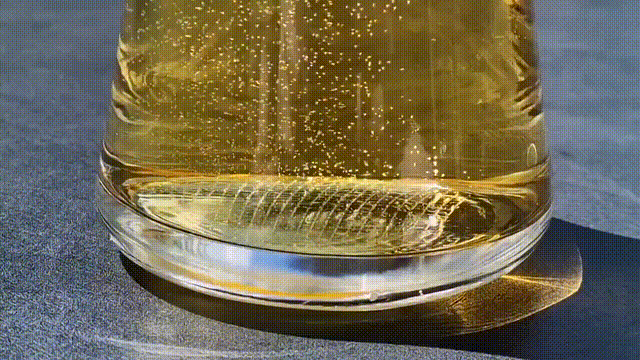Uncovering beer glass tech

If you are here, you are probably wondering what a beer glass gadget is, just as I did. A colleague, after work, was telling a pub story about how he had heard of this beer glass gadget, located at the bottom of the beer glass, that makes beer fizzy. Apparently, if you have been served a dirty glass, you won’t see bubbles forming at the bottom of the glass. Now you know. I found this very fascinating, which is why I decided to write this post about it.
Yeah, this sounds like some crazy conspiracy theory. Surely, we would all know about this type of invention that makes beer bubbly, right?
The mystery of the beer glass gadget
I decided to figure out what was going on. What is this mysterious gadget at the bottom of the glass? I had no clue what could make beer fizzy.
After some googling, I found the answer. The process of making beer fizzy is referred to as the beading effect.
A nucleation site (e.g. scratch on a glass or an engineered device) that allows bubbles to form and rise in the beer, sometimes referred to as “beading.”
So apparently, these purposefully engineered beading gadgets provide nucleation points that are etched at the base of the glass to:
- Maintain a frothy head to help the beer maintain its fizziness through controlled gas release, giving it a fresh and crisp taste.
- Make the beer look more appealing. Who wouldn’t enjoy some bubbles floating from the bottom of the glass?
How do the bubbles form?
But how and why are bubbles forming with the help of these nucleation points? Well, these points help to release carbon dioxide (CO2) bubbles from the beer, which enhances the carbonation.
Nucleation points
The nucleation points act as places for bubble formation. On a side note, this is the same way Mentos candy provides nucleation points for the formation of CO2 bubbles from carbonated soda. Once the beer is poured into the glass, the dissolved CO2 in the beer attaches to these nucleation points, as the energy barrier for bubble formation at nucleation points is lower.
Bubble release process
The bubble at each nucleation point keeps growing as more CO2 accumulates. When a bubble reaches a certain size based on the characteristics of the nucleation site, the size, shape, and roughness, its buoyancy (the adhesive force keeping the bubble attached to the nucleation site) causes it to detach from the nucleation point and rise to the surface
Nucleation characteristics
The characteristics of nucleation points, such as their size, determine the frequency of bubbles being formed. Smaller points will produce a finer stream of bubbles, while larger and fewer nucleation points can create larger bubbles that rise less frequently. Another interesting fact is that while the bubble rises to the top of the beer, it will keep growing by collecting more CO2.
Helps to surface aromatic compounds
As these bubbles in a stream keep rising to the top of the beer, they also carry volatile aromatic compounds from the beer to the surface, enhancing the flavour for that crisp taste.
Experimentation
I got my hands on one of those beer glasses. It wasn’t that hard, to be honest. Also, what a great opportunity to experiment and record some video, not that I wouldn’t enjoy a cold beer on a hot summer day. 😉

Cheers! 🍻